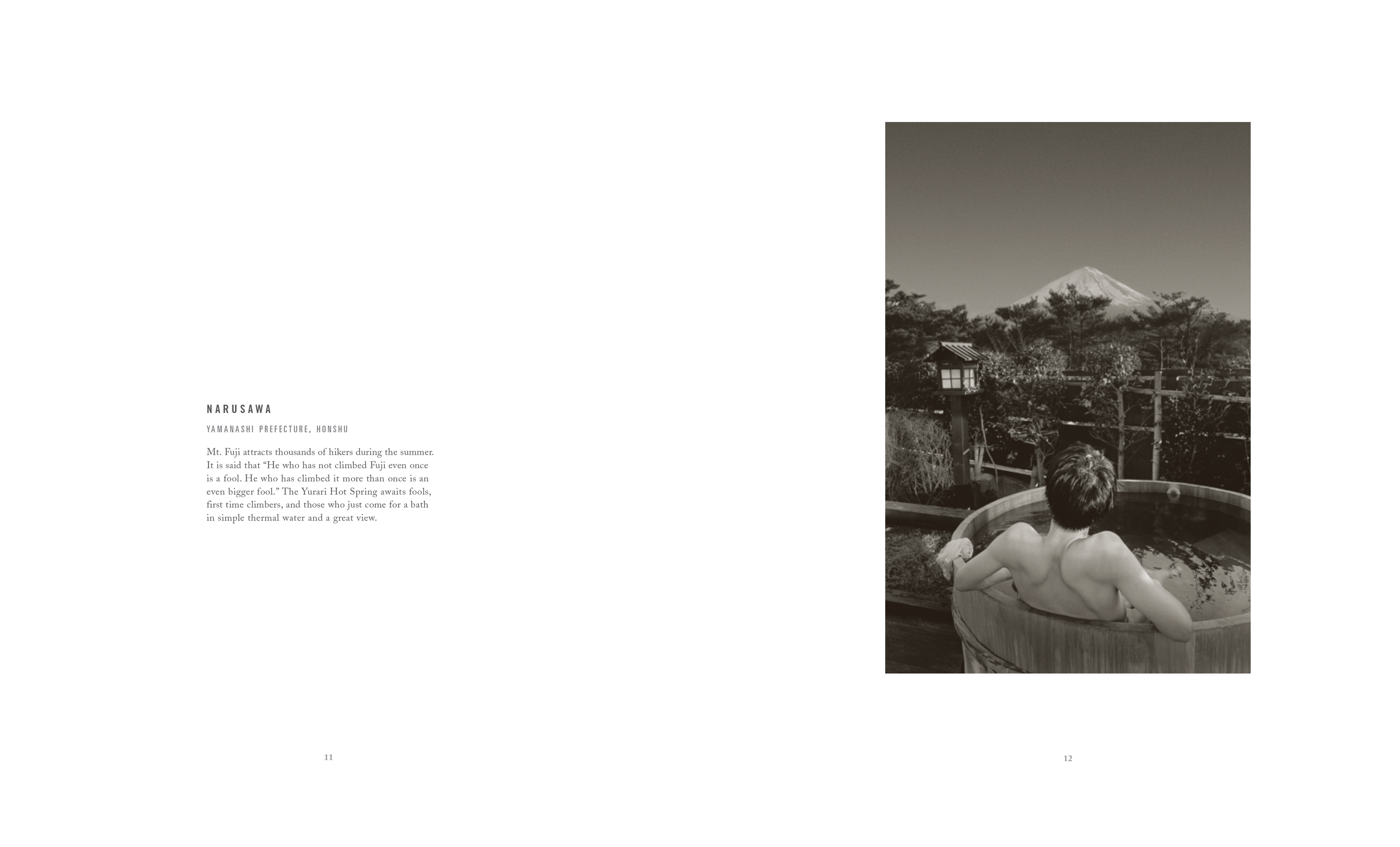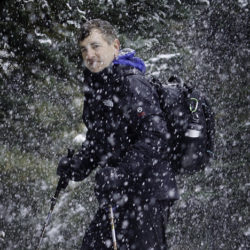Mark Edward Harris
Interview with Mark Edward Harris
TIFA 2019 Winner, 2nd Place Book Category, “The Way of the Japanese Bath”
Harris is a very experienced travel photographer and visual narrator, who has ventured to the far corners of the planet. His work has been distributed in Life, Conde Nast Traveler, Wallpaper, National Geographic, Stern, and many other magazines and publications. He also occasionally teaches travel photography workshops.
Q: What kind of photography do you identify with?
I feel closest to documentary photography. The world is such an amazing place. As the late, great Mary Ellen Mark once told me, “It’s harder to do better than reality.”
Q: Among your works, which one is your favorite? Why?
I could narrow it down to three:The Way of the Japanese Bath, focusing on the rituals surrounding the Japanese hot spring, my work in North Korea, and my current project on orangutans which I expect to see in book form in the not too distant future. My interests and concerns are somewhat varied and I think it’s reflected in the types of work that become long term projects. My Bachelor’s degree is in history and my Master’s is a major I created called Pictorial/Documentary History so my interest in cultures and history and ethnographic studies dates back to the beginning of my career.
Q: What is this latest work with the orangutans and what inspired you?
Concerns over the impact of palm oil production on orangutans and the clearing of their native habitat in Borneo and Sumatra is part of the catalyst. If things continue as they are, these fellow great apes – humans, gorillas, chimpanzees, bonobos, and orangutans are all in this category – could be extinct in the wild within a generation. There’s a balance that needs to be struck.
Hopefully projects like mine can help create awareness and through awareness more action can be taken to resolve issues. This of course can be applied to virtually any issue. The camera is a powerful tool.
Q: Describe a real-life situation that has inspired you?
Another one of what I consider my important projects is documenting the aftermath of the tsunami that devastated northeastern Japan in 2011 and following up with recovery stories. I was in Canada on a shoot the day of the tsunami was overwhelmed by the cataclysmic waves that were obliterating villages and towns all along the coast. I have been back a number of times to do follow up stories and will continue to do so. Japan has much natural beauty but the forces that have created it also leads to devastating earthquakes and tsunamis. Ten percent of all volcanic activity takes place in and around Japan.
Q: How do you know when a body of work is finished?
To me, all photo essays, at least in the classic sense, should have a beginning, middle and end that complement with strong supporting images in between. These all work together to create a visual flow throughout the project. Once I have those in place, I can feel that the series is ready to get published, exhibited and so on. Some projects, especially if they are for a magazine, have deadlines so there is that type of structure that dictates that a series is complete.
When it’s a personal project such as my Japanese hot spring series, I continue to build upon it even through it is technically complete in the sense that it already has all the components of a photo essay and has been published in book form and dozens of magazines and been the basis of exhibitions. When I teach workshops on the subject of the photo essay, I talk about creating establishing shots, environmental portraits, detail shots, and closing shots, that typically make up a photo essay. These can be applied to any photo essay. I also encourage my students to write a short introduction to not only clarify to the viewer what they’re seeing but perhaps more importantly, the exercise helps the photographer clarify their vision.
Q: What camera do you use now and why?
I used to use both 35mm and medium format but 35mm has become so impressive over the years that I am strictly shooting with them these days. My go to camera is the Nikon D850 and I’ve seen very impressive results using the Nikon Z7 in the jungles of Borneo. Nikon’s lenses are very sharp and helps render color extremely well which is of course extremely important as well.
Q: What role does the photographer have in society? How powerful do you think visual images are as a force for change?
The saying “A picture is worth a thousand words” has never been truer. Whether it’s the Black Lives Matter movement or the unrest in Hong Kong being documented or the devastating bushfires of early 2020, people are moved to action by the resulting images. While I’m basically sequestered here in L.A., I’ve been doing a documentary project on the streets of Hollywood and the impact of the pandemic on “The Dream Factory.” The photographer has a vital role to document what’s going on around them for both present consumption and to give future generations a historical perspective on our time on the planet.
Q: What does winning this award mean for you?
I appreciate awards just for the recognition of my work but more importantly I have gotten new projects as a direct result of the exposure. I got an assignment to work on Turkey’s advertising campaign after winning the IPA Book of the Year for North Korea. I came to the awareness of a producer from Coca-Cola to do a documentation of their outreach programs after my book Wanderlust won a major award. Same thing for my orangutan series. Someone saw my portrait work with the orangutans in the press because the series won an award and I was asked to do a project in Borneo. These are tangible results. Photographers can’t underestimate the exposure that one’s work receives through awards and exhibitions.
Q: Is there any photographer that you would have liked to learn from?
I’ve been incredibly fortunate to have had great relationships with so many legendary photographers. My first book, Faces of the Twentieth Century: Master Photographers and Their Work, included my portraits of and interviews with photographers including Alfred Eisenstaedt, Manuel Alvarez Bravo, Annie Leibovitz, Mary Ellen Mark, Gordon Parks, Sebastiao Salgado, Helmut Newton, Peter Lindbergh, Herb Ritts and many others. Those, combined with all the interviews I’ve done for various magazines, brings the total of photographers interviewed to around 500.
I have learned from them all. If I had to pick one photographer that I would have loved to have met and interviewed, it would be W. Gene Smith, one of the greatest photo essayists of all time. I made a pilgrimage down to Minamata on the Japanese island of Kyushu where he did perhaps his most famous photo essay along with his wife Aileen and their assistant Takeshi Ishikawa, both of whom I did have the honour to meet.
Over the last thirty years, Harris has visited 101 nations, as far away from home as Iraq and North Korea. Such endeavors have given him an extensive and insightful point of view regarding the realities of the world.

